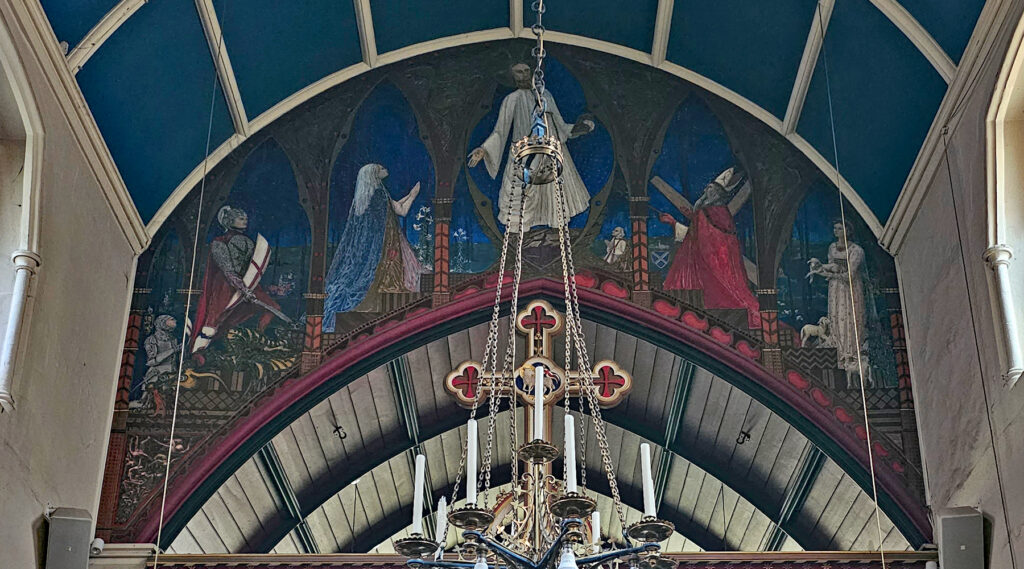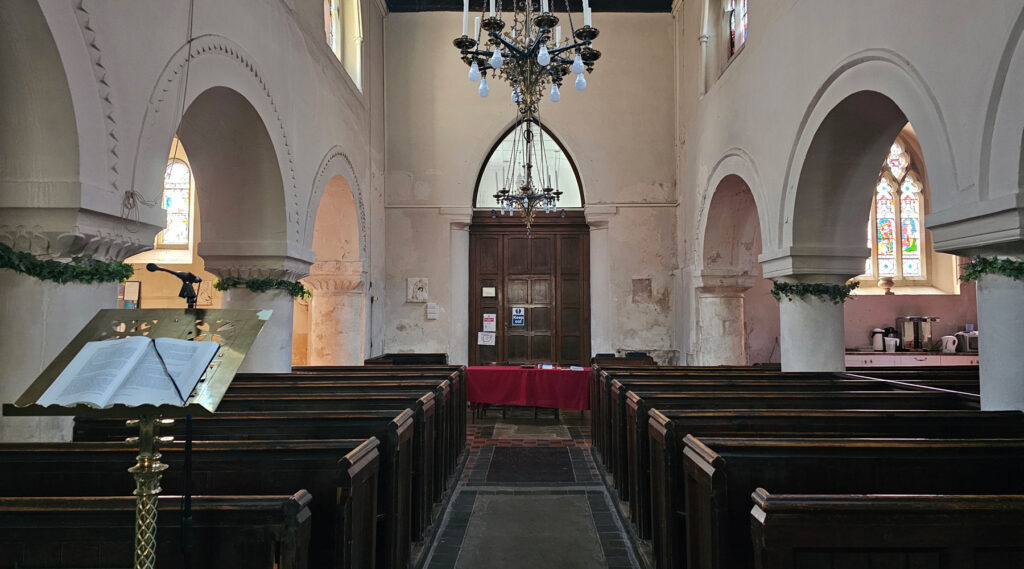On the outskirts of Windsor town centre is an ancient church that for over 400 years, owned the land that Windsor Castle stood on, and the King had to pay rent for it.
The church is one that I walked past many times when I lived in Windsor, and while the churchyard is exceptionally atmospheric, the church interior remained out of bounds. Earlier this year, on a visit to Dorney Court, I took a detour to Clewer Church, more in hope than expectation.
The church was open!
There’s been a church in this area since Saxon times, when it was thought that a settlement built up in this area where the River Thames could be forded.
The core of the current church dates from around 1100, making it some 900 years old, and there are some uncited suggestions that the north aisle and tower are around 800 years old. The font is Saxon though, making it one of the oldest in the country and a likely survivor from the older pre-Norman church.
When William the Conquerer had done his conquering, he wanted to suppress the locals, and a hill to the west of London was a suitable spot for a wooden fortification – in a small village called Windsor.
However, the land was owned by the Church and the Manor of Clewer, and the King had to pay rent to build his castle, which was likely known originally as the Castle at Clewer. Over time the village of Windsor grew into a town, and the castle became better known as Windsor Castle.
That left Clewer on the edge of Windsor as a mere suburb of the town.
The church, officially St Andrew the Apostle Church, is known to have been used by William the Conquerer, probably because the castle lacked a chapel when first built. And rather remarkably, while occasionally restored and modernised, the old church is very much the sort of church that William the Conquerer might recognise today.
Surrounded by a high wall dominated by brick and flint banding, the main entrance is on what is today the side street, with a small gate on the main road, which is how I always walked into the churchyard. The paths are memorable, thanks to being lined with tall evergreen trees.
As a young person reading The Lion, the Witch and the Wardrobe, a winter’s walk through this avenue of trees was strongly reminiscent of the entry through the wardrobe into Narnia.
To my delight, a small sign on the door says that the church is open daily from 10am to 6pm.
Inside is a plain church, with the thick heavy-laden Norman pillars running the length of the nave. Look closely, and you can see suggestions of later changes on the north side with the modest decoration over the arches.
A decorative chancel screen separates the choir from the congregation, and above is what I thought initially was a rare but presumably restored survivor of Puritan whitewashing — a marvellous mural, but turned out to be a 1960s addition.
The mural depicts the risen Christ flanked by St. Andrew (depicted as a Bishop), the Virgin Mary, St. Agnes (holding a lamb) and St. George. There are also tiny kneeling figures of Sir Bernard Brocas, the 14th Century Lord of Clewer Manor, and Thomas Thellusson Carter, Rector of Clewer from 1844 to 1880.
Well, it still looks good, even if several hundred years younger than I had expected.
Something else that’s a bit odd, is that the Virgin Mary is shown in the main stained glass windows with a wedding ring. How progressive!
As a church, it’s historic and interesting to visit, but for me, it was simply the chance to go inside a church that had been closed every time I ever thought to try the door when passing by.












Check out the grave of the Gooch family in the churchyard, which includes Daniel Gooch, engineer of the GWR.